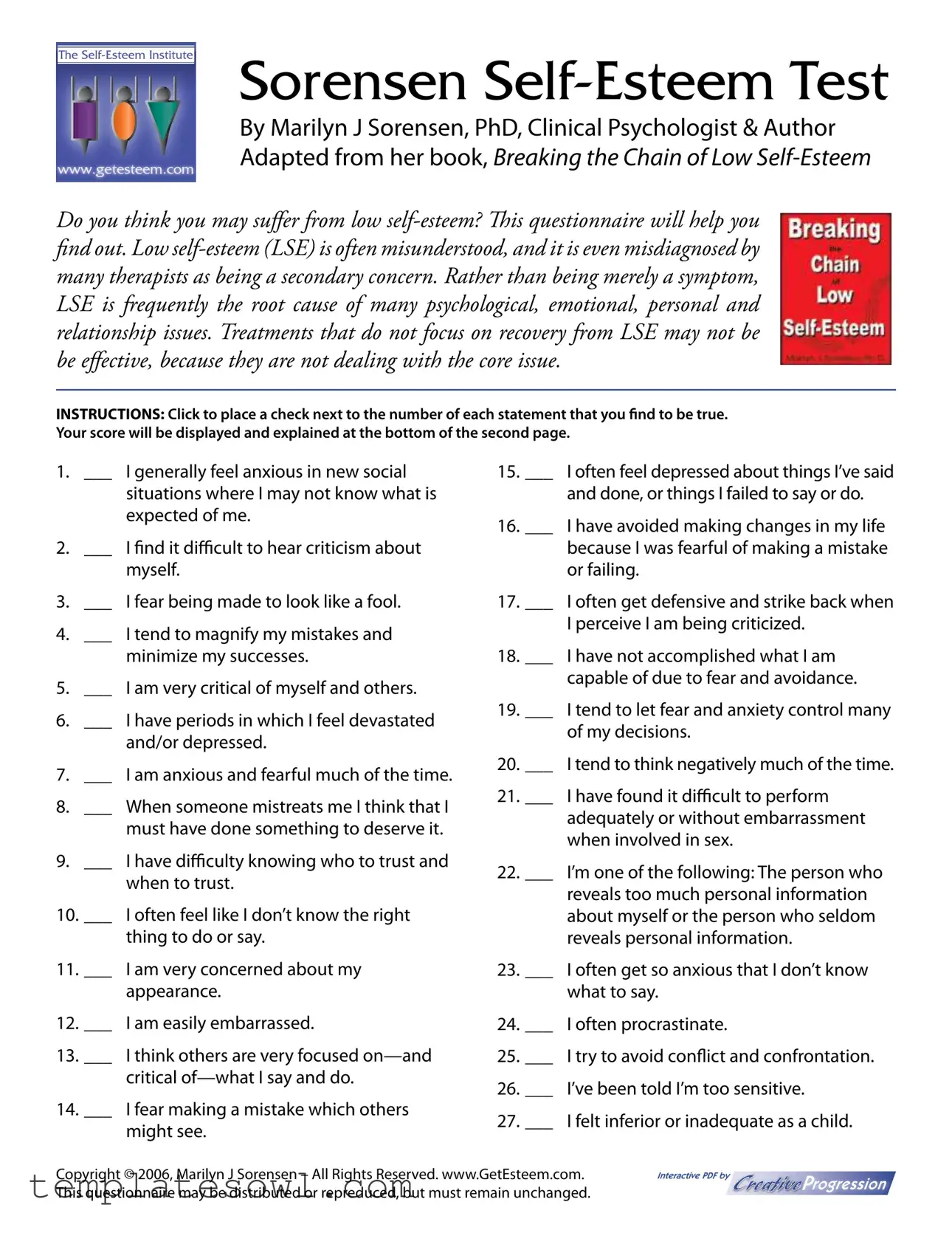What is the purpose of the Self Esteem Test?
The Self Esteem Test is designed to help individuals identify whether they may be suffering from low self-esteem. By answering a series of statements, you can gain insight into your self-perception and recognize the areas where you might need support.
How do I complete the Self Esteem Test?
To complete the test, simply read each statement and select a checkbox next to the ones that resonate with you. After answering all statements, your score will be calculated and displayed at the end of the questionnaire, which will help you understand your level of self-esteem.
What are the different levels of self-esteem indicated by the test results?
The test provides four levels of self-esteem based on your score. If you check between 0 to 4 statements, you have fairly good self-esteem. Scores from 5 to 10 indicate mild low self-esteem. Moderately low self-esteem is reflected in scores of 11 to 18, while scores of 19 to 50 indicate severely low self-esteem.
Will my score determine my worth as a person?
Your score does not define your value as a person. It measures your self-perception at a given moment. A high score indicates areas that may require attention, while a low score suggests a healthier self-view. It's a starting point, not a judgment.
What should I do if I have low self-esteem?
If your test results indicate low self-esteem, it's important to consider seeking help. Resources are available to assist you in overcoming these feelings. Therapy, support groups, and self-help strategies can be effective in improving self-esteem. Visit www.getesteem.com for more information.
Can low self-esteem affect my relationships?
Yes, low self-esteem can significantly impact personal relationships. It may lead to difficulties in communication, increased sensitivity to criticism, and fears of rejection. These factors can hinder the development of healthy, supportive connections with others.
How does childhood influence self-esteem?
Childhood experiences play a critical role in shaping self-esteem. Growing up in a supportive and nurturing environment tends to foster positive self-perception. Conversely, negative experiences or a dysfunctional upbringing may contribute to low self-esteem that persists into adulthood.
Is it possible to improve my self-esteem?
Absolutely. Self-esteem can be improved through various methods, including therapeutic practices, positive affirmations, and personal development exercises. Taking proactive steps towards understanding and addressing your feelings can lead to meaningful changes in how you view yourself.


